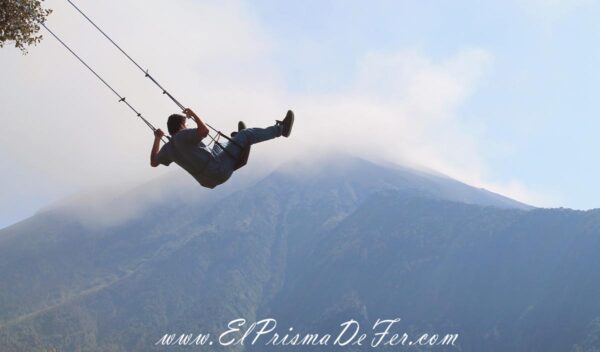Guayaquil wasn't a city I was too impressed with. Aside from its famous Malecón, which is well-maintained and offers a pleasant space for strolling, and the path to the top of Cerro Santa Ana, which is very picturesque, the rest of the city gave me a very different feeling.
I found myself in an environment that didn't quite convince me, and where insecurity was easily felt on the streets.
Furthermore, the dirt and neglect in several areas take away much of its charm, especially if you've been touring other Ecuadorian cities with more history, colonial architecture, or nearby nature.
However, I think it's a destination that many of us end up visiting because it's an important connection point, and that's why I'm going to tell you about my experience in this city in Ecuador.
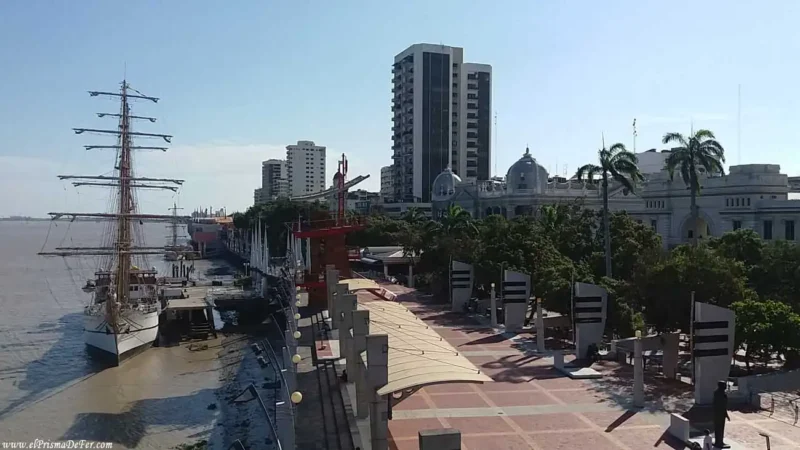

Table of Contents
Where is Guayaquil located?
Guayaquil is located on Ecuador's Pacific coast, within the region known as the Ecuadorian Coast. It sits on the banks of the Guayas River, which historically made it a strategic port and the main gateway for goods entering and exiting the country.
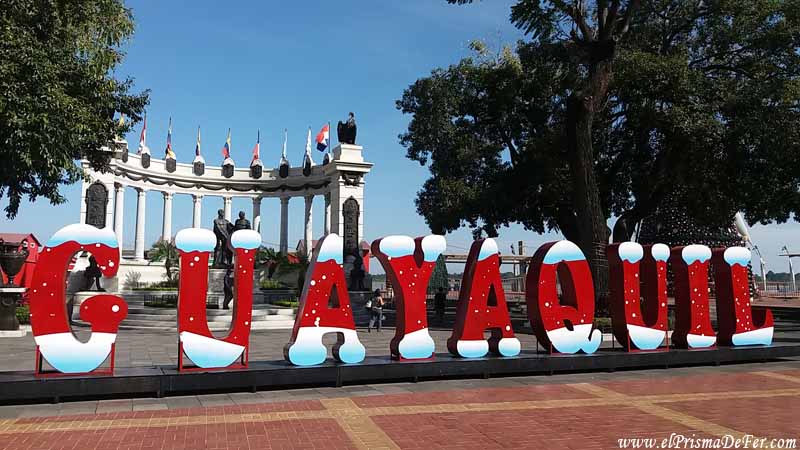
It is the largest city in Ecuador and also one of its main economic centers, although it does not have the same tourist appeal as Quito or Cuenca.
Its proximity to the ocean and international routes has established it as a key connection point, both for those arriving by plane and for those traveling to the coastal region or the Galapagos Islands.
Is Guayaquil unsafe?
Of all the cities I visited in Ecuador, Guayaquil was the only one where I truly felt unsafe on the streets.
I spent a couple of days walking around it, and beyond the tourist spots like the Malecón and Cerro Santa Ana, I found it uncomfortable to move around in other areas. Several times I felt like some people were looking at me strangely, and on more than one occasion I even felt like someone was following me a few steps behind, as if to see where I was going.
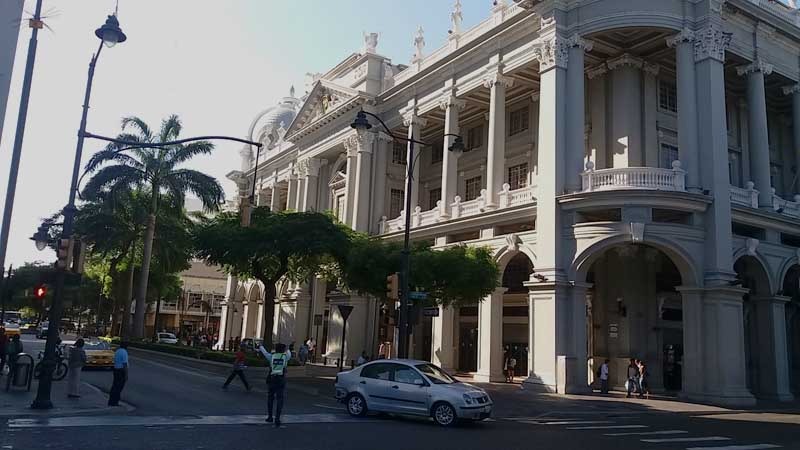
That perception stayed with me throughout my visit and made a difference compared to Quito, Cuenca, or other cities in the country, where I never experienced that discomfort.
Therefore, my recommendation is not to walk alone in Guayaquil outside of the tourist areas, especially at night. The safest option is to stay within the controlled circuit of the Malecón, Las Peñas, and Cerro Santa Ana, and to get around, use Uber or safe taxis instead of walking long distances.
Some practical safety tips in Guayaquil
- Avoid displaying valuables such as cameras, expensive watches, or large phones on the street.
- Keep your money in different places, not all in the same wallet.
- Use backpacks or closed bags and, if possible, carry them forward in crowded areas.
- Always check with locals or accommodation providers to see which areas to avoid, as the security situation may vary.
- At night, I always preferred Uber or reliable taxis instead of walking, even for short distances.
Meeting between San Martín and Bolívar in Guayaquil
In Guayaquil, on July 26 and 27, 1822, the famous "Guayaquil Interview" took place between the liberators José de San Martín and Simón Bolívar, a decisive moment in the process of Latin American independence.
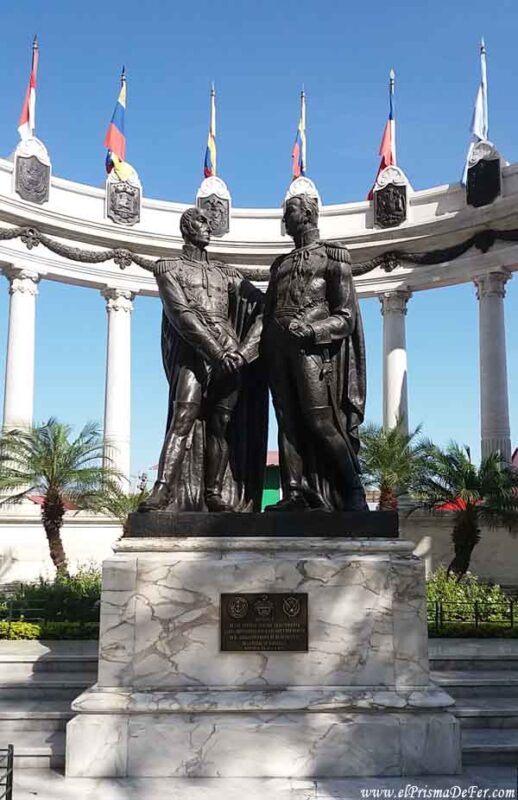
Although there are no official records or reliable witnesses of what exactly was discussed, it is known that the two leaders discussed the strategy for ending the war against Spanish rule and the political future of the newly free states.
San Martín proposed unifying the commands and achieving more effective coordination, but Bolívar, although respectful of San Martín's military genius, did not accept this subordination.
At the end of the interview, San Martín resigned from his posts in Peru and gradually withdrew from public life, leaving Bolívar to act as the main leader in future campaigns.
This event symbolizes the convergence and divergence between two different visions for Latin America, and Guayaquil was chosen as a neutral point for this exchange of views.

Map with the best attractions to see in Guayaquil
Best things to do in Guayaquil
Although my overall impression of Guayaquil wasn't very positive, the city has some interesting spots worth exploring if you're already there, especially in the more controlled tourist areas.
Stroll along the Malecón 2000
The Malecón 2000 is, without a doubt, the city's most attractive space. It's a pedestrian promenade that runs along much of the Guayas Riverbank, featuring green areas, museums, restaurants, and monuments.
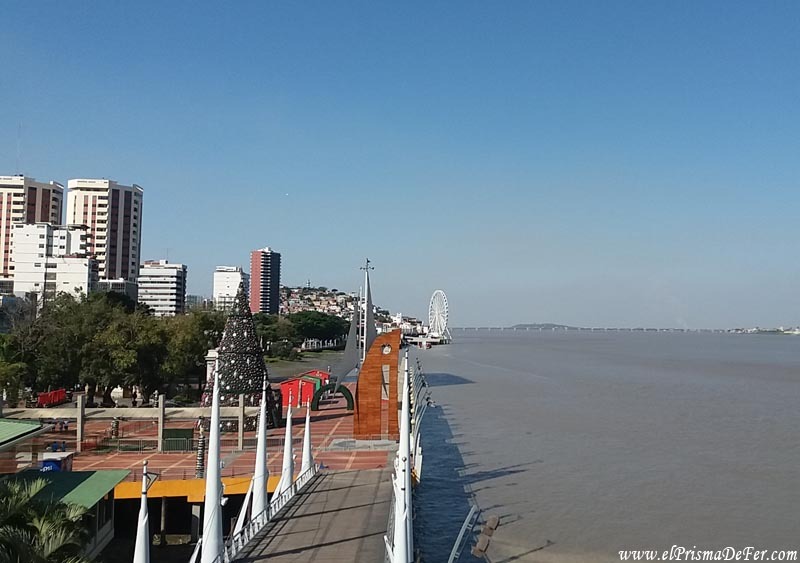
It's one of the safest places to walk and enjoy a bit of peace and quiet amidst the urban chaos.
Along the walk you will find interesting points such as the Moorish Tower or the Anthropological Museum, as well as viewpoints with good views of the river.
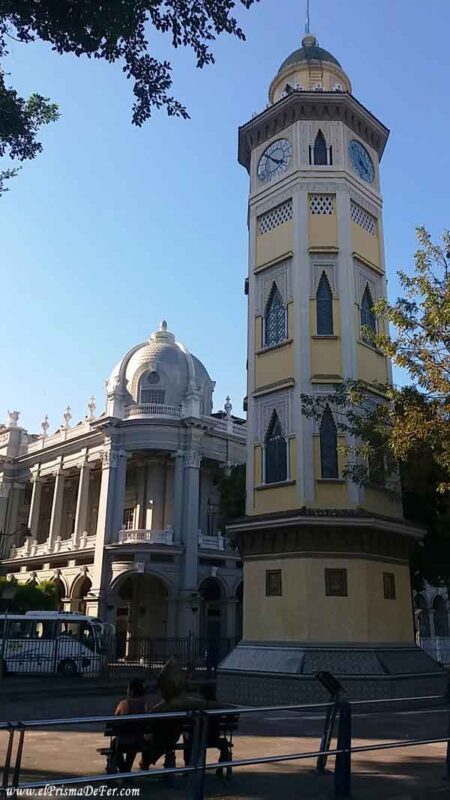
Catamaran ride along the Guayas River
One of the most enjoyable activities in Guayaquil is sailing down the Guayas River on a catamaran. Various tours depart from the Malecón 2000 (daytime and evening) that allow you to appreciate the city from another perspective, with views of the urban skyline, the Las Peñas neighborhood, and Santa Ana Hill.
Climb Santa Ana Hill
Santa Ana Hill is one of the city's classics, with its colorful staircase leading to the summit, where a small lighthouse and chapel are located.
The route passes through squares and colorful houses, creating a picturesque postcard that is often the most promoted in travel guides.
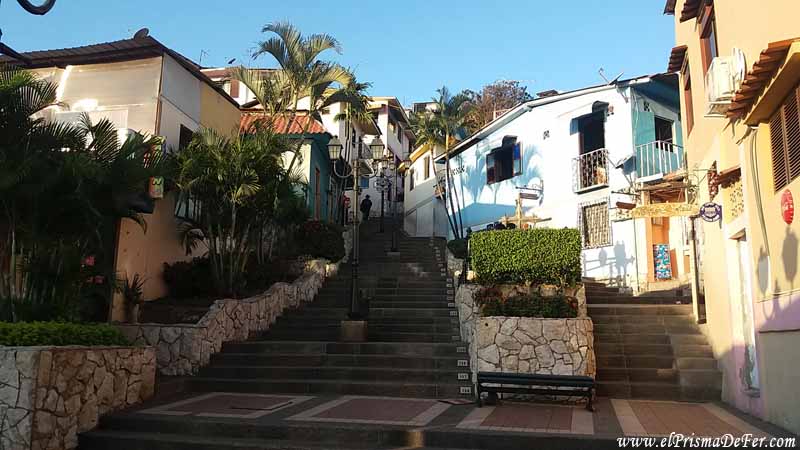
From above, the views of the city and the river are quite good, although the level of security and the fences that limit walking are also striking.
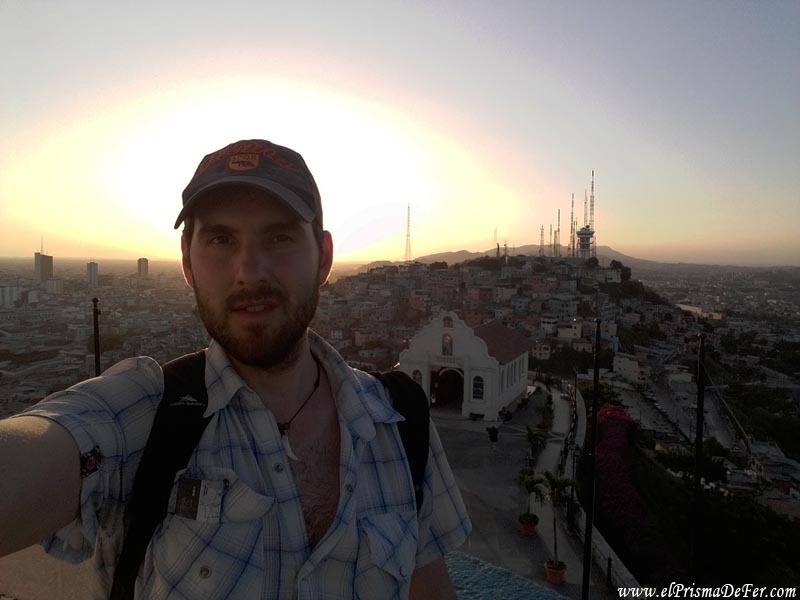
Something curious happened to me when I was looking for the path to the summit. At first, without realizing it, I started climbing on an unofficial path, the one used by locals.
It was afternoon, still daylight, and I was carrying my camera. A few steps away, some neighbors approached me and warned me not to continue there because there was a high probability of being robbed.
They recommended I continue along the tourist trail ahead. I thanked them for their honesty and changed course.
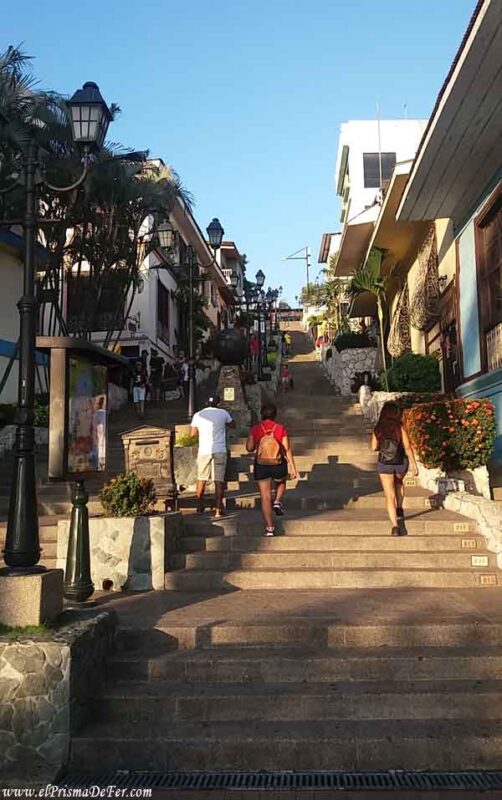
I finally found the right entrance: a long, colorful flight of stairs that, while much more picturesque and safe, also feels too tightly controlled to prevent anyone from straying from what's allowed.
Walk through the Las Peñas
Very close to Cerro Santa Ana is the Las Peñas neighborhood, one of the oldest areas of Guayaquil.
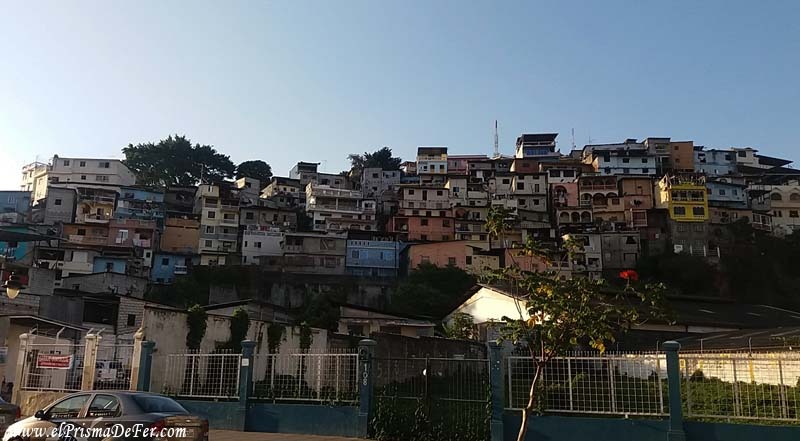
Its cobblestone streets and colorful wooden houses give it a colonial feel that contrasts with the rest of the city.
Today, many of these houses have been converted into art galleries, bars, or restaurants, giving them a bohemian atmosphere.
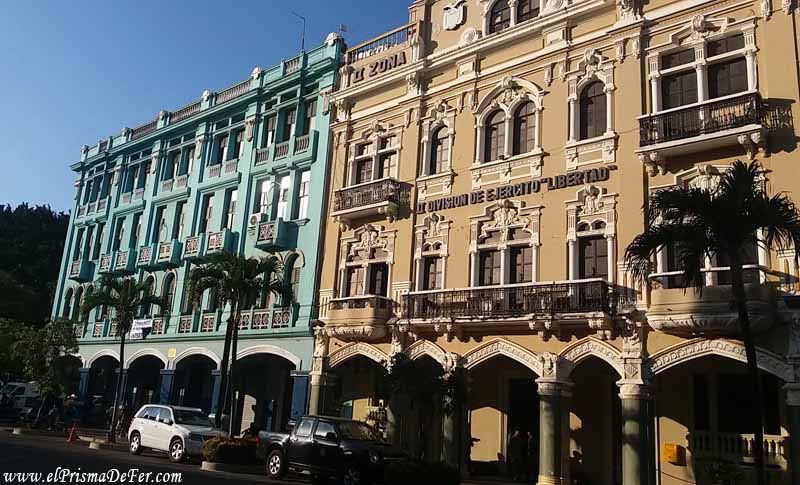
Walking through Las Peñas can be pleasant during the day, but as in other areas of the city, it's best to be cautious at night and avoid lonely areas.
It's a good place to take photographs and get an idea of what Guayaquil was like before it became the great city it is today.
Visit Seminario Park (Iguana Park)
In the heart of Guayaquil is this park, which, at first glance, seems like any other. However, what makes it special is the number of iguanas that live there in complete freedom.
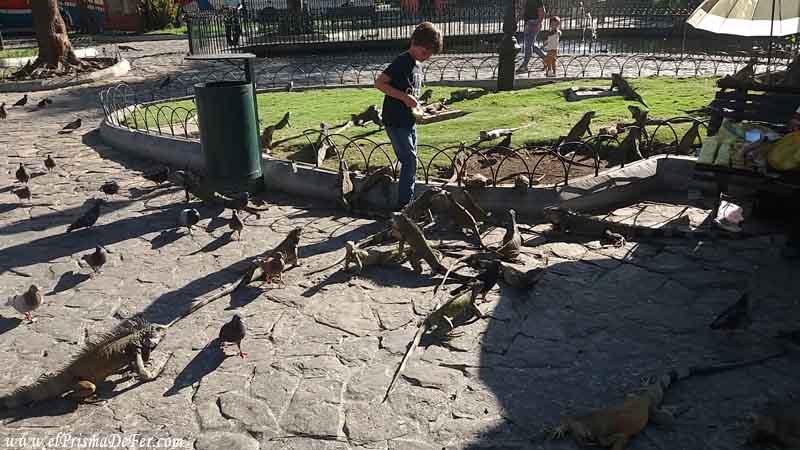
They wander among people, climb trees, and even come close to looking for food. It's a curious and fun place to spend some time, especially if you've never seen these animals up close.
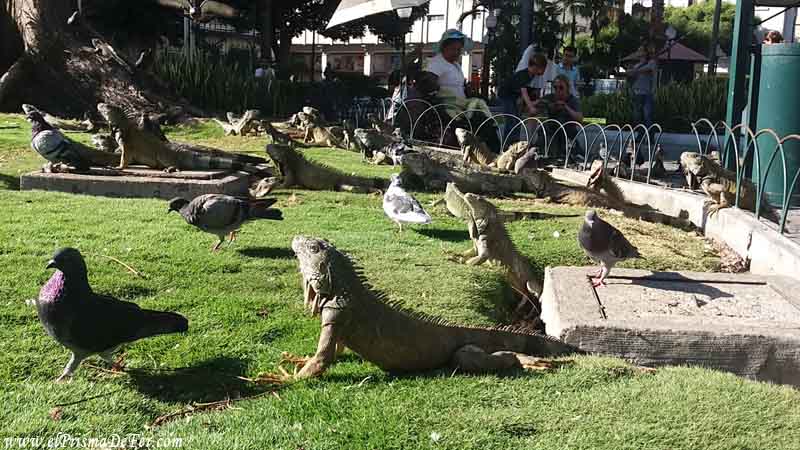
Since the green iguana is a species native to the Ecuadorian coastal region and already lived in the surrounding area, they found a refuge in this park that partially mimics their natural habitat.
Actividades organizadas en Guayaquil
If you prefer to explore the city with a guide and without worrying about logistics, there are several organized tours of Guayaquil that are worthwhile. You can choose from panoramic walks through the main tourist spots, night tours, or even excursions that combine the city with visits to the surrounding areas.
- Guided tour of Guayaquil
- Guayaquil Night Tour
- Panoramic tour of Guayaquil
- Excursion to the Churute Mangrove Reserve

How to get from Guayaquil to Cuenca, the coast, and the Galapagos
Guayaquil serves as a major hub within Ecuador, and from here you can reach both the Andean mountains and the coast with relative ease. While the city itself didn't impress me much, it's a good place to travel to worthwhile destinations.
From Guayaquil to Cuenca
The most common way to get from Guayaquil to Cuenca is by bus. The journey takes between 4 and 5 hours, depending on traffic and the company chosen. Buses usually depart from the Guayaquil Bus Terminal, which is large and well-organized.

The trip crosses part of Cajas National Park, making it very picturesque. You go from the humidity and heat of the coast to mountain landscapes and a much cooler climate in a matter of hours.
There's also the option of hiring private transportation or traveling by car, although the bus is the most economical and popular option among backpackers.
From Guayaquil to Montañita, Puerto Lopez and the coast
If you're looking for a beach and a more relaxed atmosphere, Guayaquil is also easily connected to the coast. To get to Montañita, the most famous town in the area for its surfing and party vibe, the bus ride takes approximately 3 hours.

There are frequent departures from the Terminal Terrestre to Santa Elena, and from there you can continue to Montañita. The fares are affordable and the journey is easy.

Puerto Lopez, a coastal town ideal for visiting Machalilla National Park (coming soon)
How to get to the Galapagos from Guayaquil
The only practical way to reach the Galapagos Islands is by air: direct flights to the Galapagos Islands depart from the José Joaquín de Olmedo International Airport (GYE) in Guayaquil.
The flight lasts approximately 1 hour and 30 minutes to 2 hours depending on the exact route.
When planning your trip, you should consider the following:
- There are no direct international flights to the Galapagos; you must first arrive on mainland Ecuador (Guayaquil or Quito) and then board a domestic flight to the islands.
- Before boarding the domestic flight, immigration and biosecurity checks are carried out in Guayaquil to ensure the protection of the island ecosystem.
How to get from the airport to downtown Guayaquil
I arrived in Guayaquil on a flight from Cusco, landing at the José Joaquín de Olmedo International Airport, which is quite close to the city center.
The location is convenient, as you can reach the Malecón 2000 area or tourist neighborhoods like Las Peñas and Cerro Santa Ana in less than 20 minutes by car.
Uber, taxi, transporte privado
The best option is to take an Uber, an authorized taxi, or a private transportation directly from the airport. It's not an expensive ride, and considering the perception of insecurity I had in the city, I think it's worth prioritizing comfort and safety from the start.
Bus
If you're looking for something more affordable, you can also take a city bus from the airport that connects to the city center. Several lines pass right in front of the airport terminal, serving different parts of the city, including the Malecón and the bus terminal.
The fare is very cheap and can be a valid alternative for those traveling on a backpacker's budget, although it should be noted that the buses are usually crowded, make many stops, and offer little security if you have luggage or valuables.
Mix between Uber and Bus
Another intermediate option is to first take a taxi or Uber to the Guayaquil Land Terminal (which is very close to the airport, less than 5 minutes away) and from there take a city bus to the center or even medium-distance buses to other destinations in the country.
This terminal is large, organized, and much safer than taking a direct bus from the street in front of the airport.
In general, the transfer is quick and easy, but if you arrive at night or with a lot of things on you, my advice is to go straight to Uber or a taxi and skip the buses to get around the city once you're settled in.
Where to stay in Guayaquil
Unlike other cities in Ecuador, it's important to be very careful in your surroundings here. Not all neighborhoods are recommended for walking, especially at night, and it's common to hear warnings about robberies and scams.
The most recommended areas to stay are those close to Malecón 2000, Cerro Santa Ana or Las Peñas neighborhood. There, the police presence is much stronger, and there's a sense of greater control, allowing for more peace of mind. Of course, prices tend to be a bit higher than in other areas of the city, but you'll gain in safety and comfort.
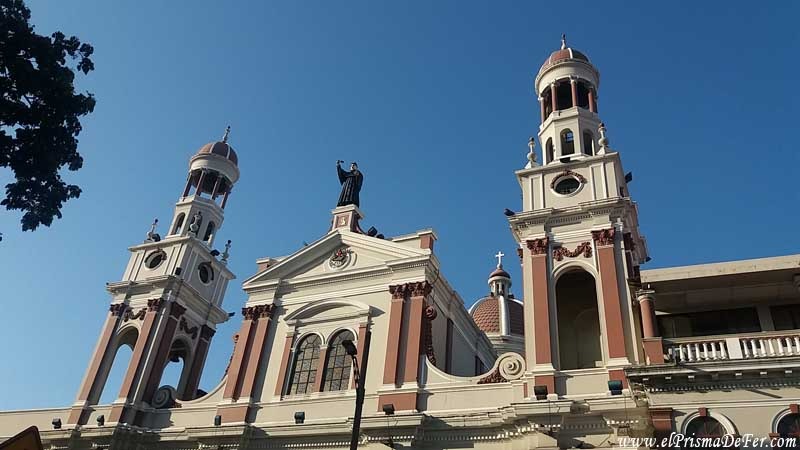
Another option is to stay near the José Joaquín de Olmedo Airport or in the Urdesa area, which is more residential and quiet. Many tourists who only pass through Guayaquil as a connecting point to the Galapagos Islands or the coast choose to stay there, avoiding having to venture too far into the city center.
Final thoughts on Guayaquil
The two days I spent in Guayaquil were more than enough to explore what the city had to offer, and my overall impression wasn't the best.
Beyond the tourist attractions like the Malecón 2000, Cerro Santa Ana, and Las Peñas, I felt the city was chaotic, dirty, and had a sense of insecurity that I hadn't experienced anywhere else in Ecuador.
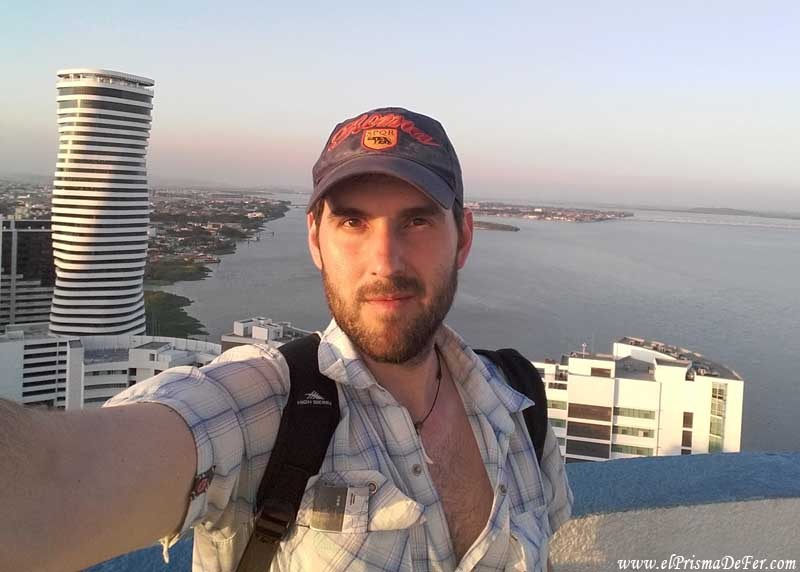
Compared to Quito, Cuenca, or even the towns in the mountains and on the coast, Guayaquil is clearly not a place I would return to out of pleasure.
However, there is one practical aspect that makes it relevant for any traveler: its excellent connectivity.
From here, it's easy to travel to the Andean region, to destinations like Cuenca, or to the coast and famous beaches like Montañita, making the city a strategic transit point rather than a destination for stay.
Support The Prism of Fer!
Your support helps me continue creating free content on the blog. Thank you so much!



